Pabbly vs Zapier: Which Does Automation Better?
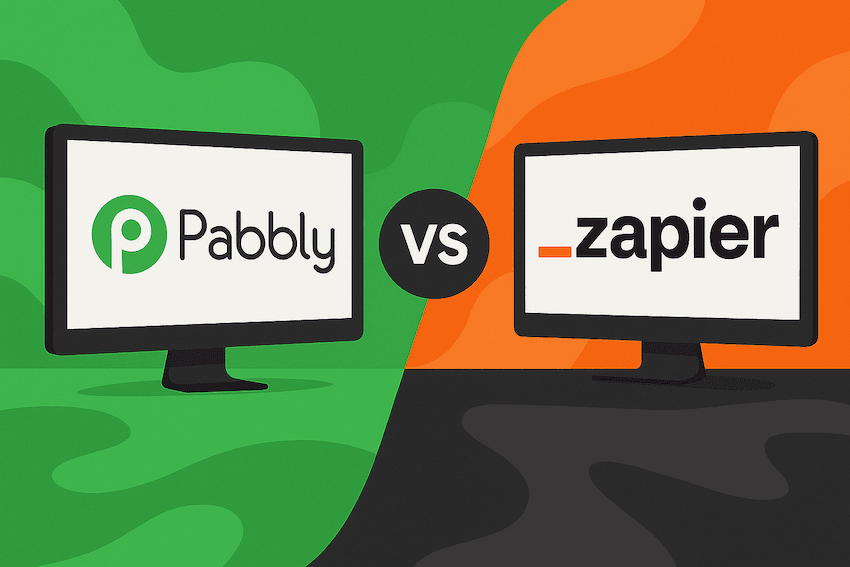
Work gets simpler when you use automation software that handles your daily processes for you. Still, many teams face the Zapier vs Pabbly question when looking for a system that matches their automation needs.
Pabbly Connect offers simple automation at a lower cost. Zapier, on the other hand, delivers more integrations for bigger teams.
Is knowing that enough to make the right decision for you? No.
Understanding how each platforms differ helps you pick the right one. In this article, you'll see a detailed comparison of both tools and learn which one automates repetitive tasks better.
What is Pabbly?
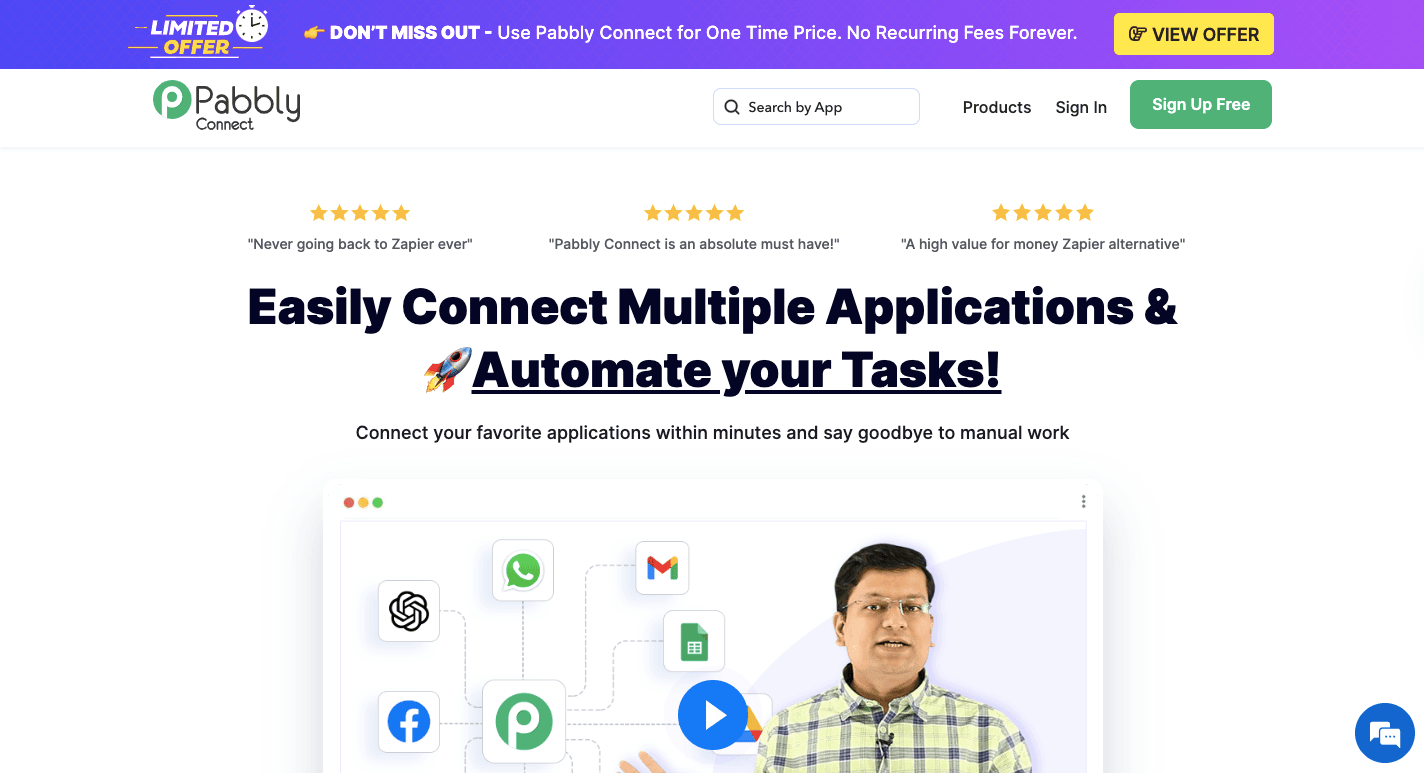
Pabbly Connect is an automation tool that links apps so you can save time and automate repetitive tasks. It works through triggers and actions.
A trigger starts the workflow, and an action completes it in another app.
Let's say a new lead appears on Facebook, Pabbly Connect can record it in Google Sheets and send a welcome email. You can also use it to automate social media posts for marketing campaigns.
Anyone can create workflows in its visual editor without coding knowledge. The steps are easy: pick a trigger app, set the event, add actions, and map the data. Once you turn the workflow on, it runs automatically in the background.
Currently, Pabbly Connect supports over 2,000 data integrations. For apps that don't have built-in connections, you can rely on webhooks.
Other tools, like its Email Parser and Scheduler, improve automation workflows even more.
What is Zapier?
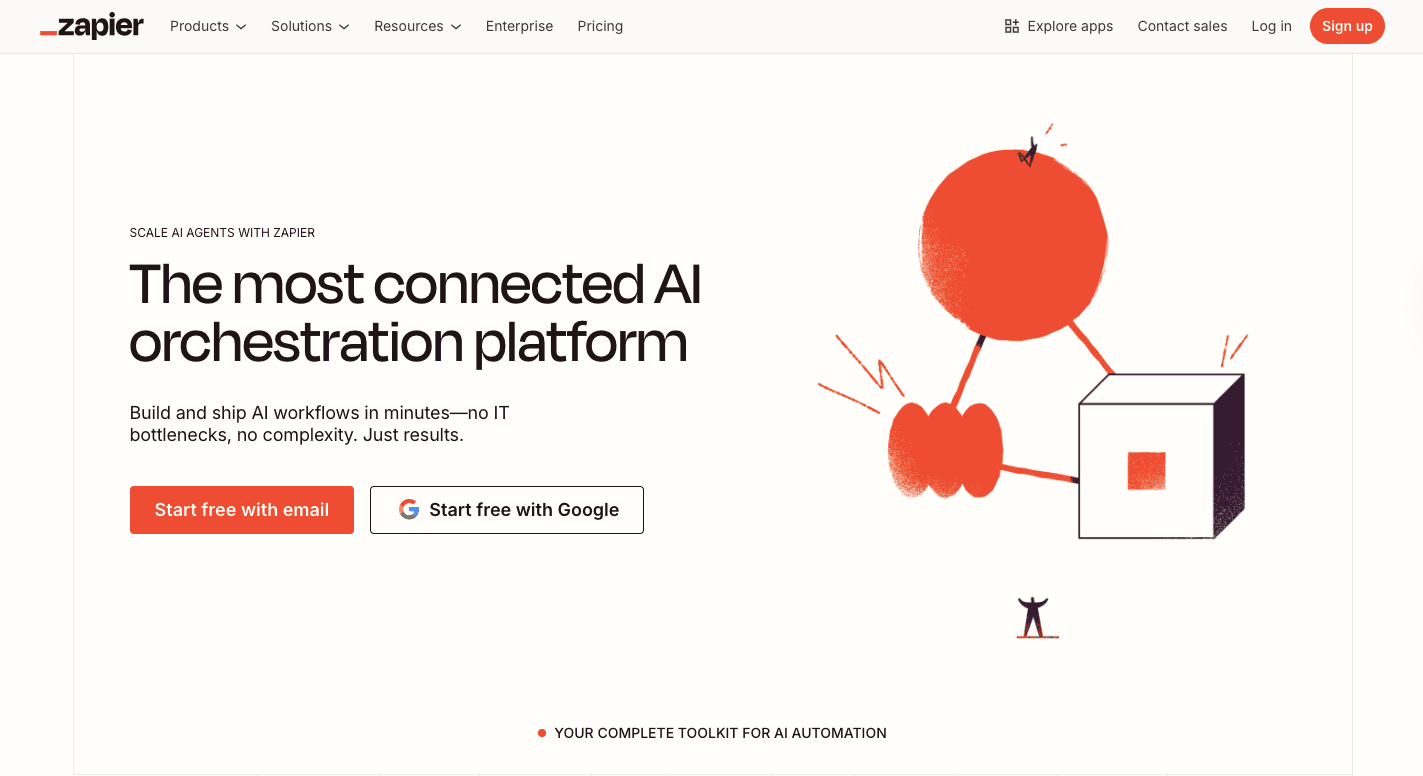
Zapier is an automation app for teams that want to automate workflows across 8,000 apps. Since it has a user-friendly interface, you can create and launch workflows without technical expertise.
The setup follows a trigger-and-action structure that anyone can understand. A trigger starts the process, and an action completes it in another app.
Each automation is called a "Zap." You can build simple Zaps with one trigger and one action or design multi-step Zaps that run several actions in a sequence.
It further includes filters and paths to manage conditional logic so a Zap runs only when specific rules are met. For more control, you can add custom scripts to your Zaps.
Pabbly vs Zapier: Features Detailed Comparison
Now, let's compare the key features of Pabbly and Zapier to show how each platform supports different workflows.
App Integrations
Connecting apps is what makes automation useful. Without it, every tool works alone, and you end up copying data by hand.
Pabbly
Pabbly Connect links with more than 2,000 apps. You can connect to:
- Gmail
- Slack
- Shopify
- Google Sheets
- Amazon Seller Central (Beta)
- Asana
Setting up an integration doesn't take long. You pick the app that starts the action, choose what happens next, and test it.
The setup doesn't need technical expertise, which makes it friendly for anyone who just wants to get work done. You can also build custom integrations for apps that aren't included.
Many small teams use these features to save time on automating tasks that take hours to repeat every day.
Zapier
Zapier works with more than 8,000 integrations, which means you'll rarely find one that isn't supported. You can connect your business processes across:
- Google Sheets
- Gmail
- Notion
- Mailchimp
- ChatGPT (OpenAI)
- Trello
The interface is easy to use. You click a few buttons, choose your apps, and set what happens next.
Many users like that Zapier's extensive app integrations work with both simple and complex setups. You can build multi-step Zaps that chain several actions together or even write your own rules using filters.
Developers can go deeper by adding custom integrations, but anyone can start building automated tasks right away.
Custom Workflow Logic and Triggers
Workflow logic makes automations smart and fast. It also keeps data clean as it moves between apps with advanced logic where needed.
Pabbly
Pabbly Connect focuses on steps that anyone can follow. You pick a trigger, add one or more actions, then map fields so data lands in the right place.
The builder keeps every step visible, which helps you spot mistakes before they spread. It also supports multi-step workflows and conditional logic, so one event can branch into different results based on rules you set.
Many teams use these tools to reach efficient automation without a long setup. Filters, routers, schedulers, and delays help you control timing and flow. Webhooks fire instantly when an app supports them, which cuts wait time.
Need more depth for advanced automation? Add formatters for dates and text, parse emails for key values, and route records by lead source or region.
Zapier
Zapier centers on workflow automation with a visual editor that shows every step from top to bottom. The layout enables users to test as they build, map fields with drop-downs, and add rules that keep junk data out.
You can turn a simple trigger into dynamic workflows by adding filters and paths, then send results to different tools based on tags, form answers, or deal stage.
Then, power users create complex automations by chaining steps, calling formatters, and using paths for "if/else" branches. Zapier supports large, multi-app chains that update a CRM, ping Slack, and file documents in one run, too.
Pabbly vs Zapier: Pricing Breakdown
Comparing prices is often the first step when choosing an automation platform. Pabbly Connect and Zapier's pricing is based on how many tasks you need each month.
Pabbly
Pabbly Connect offers a free plan, monthly subscriptions, and lifetime plans.
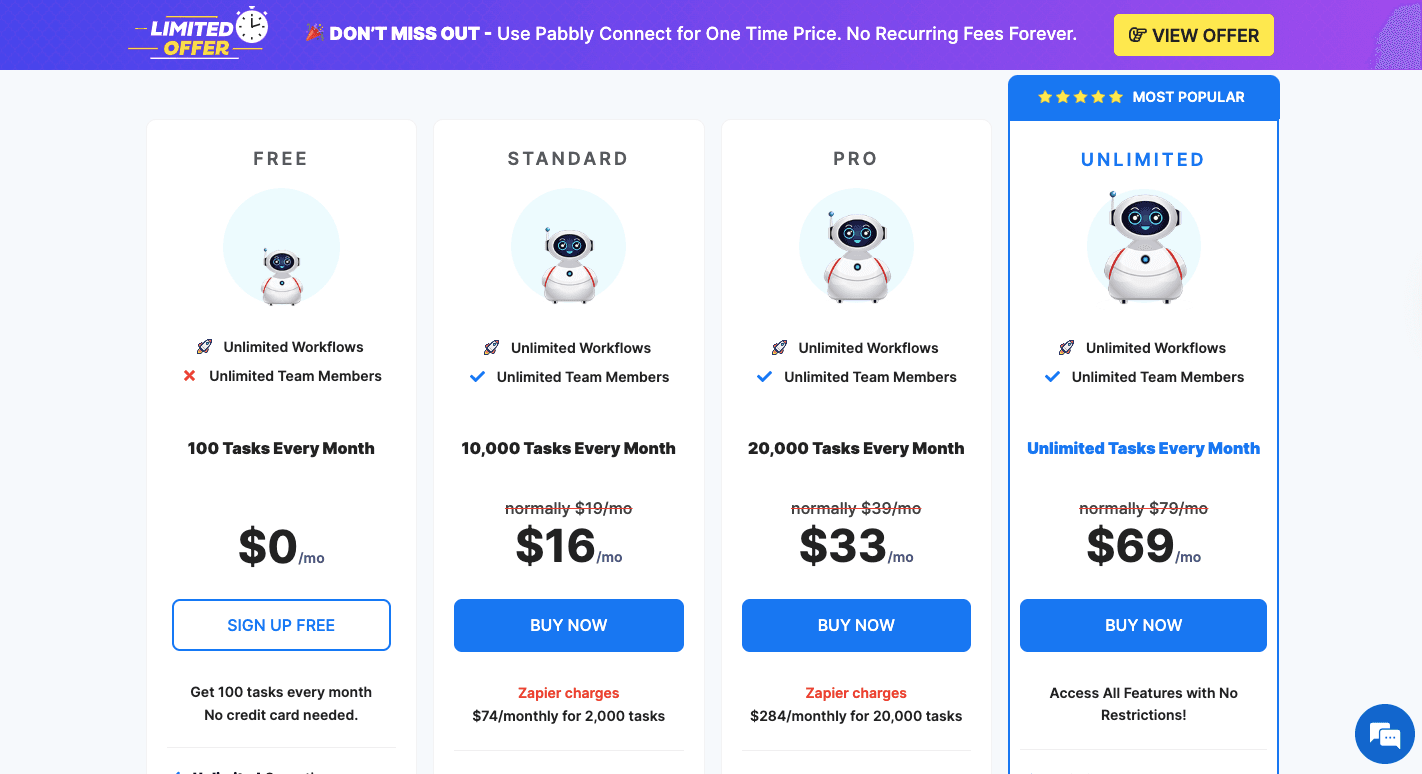
The Free plan includes 100 tasks per month, enough to try automations before paying. In comparison with other workflow automation tools, Pabbly doesn't charge for internal tasks, such as filters, paths, and fixing data.
Paid options include:
- Standard plan costs $16 per month and includes 10,000 tasks
- Pro plan is $33 per month for 20,000 tasks
- Ultimate plan costs $69 per month and gives you unlimited monthly tasks
Every plan supports multi-step workflows, instant webhooks, formatters, scheduling, and re-execution. Higher tiers add more advanced options such as an AI Assistant, MCP servers, custom variables, and shared folders.
For long-term savings, Pabbly also offers unlimited workflows on a one-time payment plan, so you can automate freely without ongoing bills.
Zapier
Zapier takes a more traditional route with several subscription tiers.
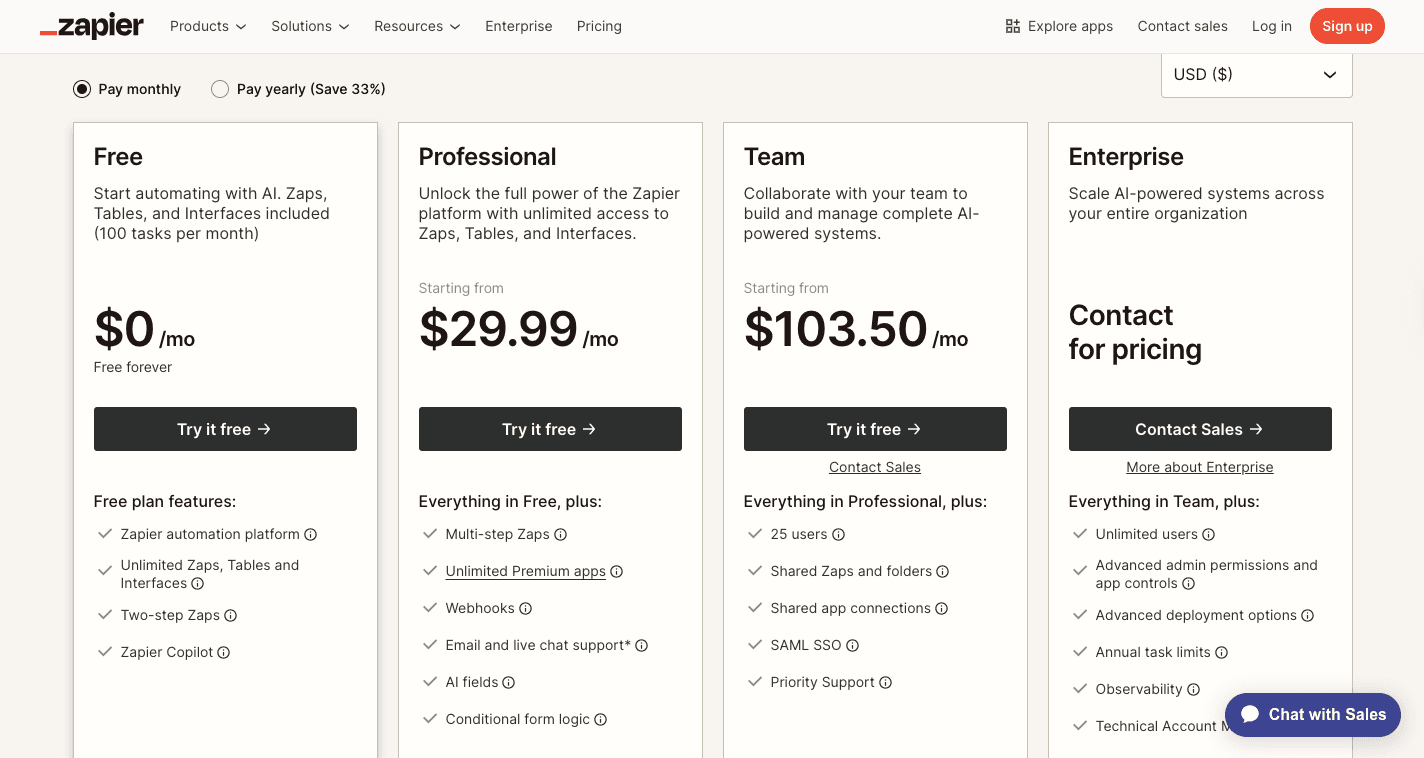
You can start for free with 100 tasks per month for a single user, and automations run every 15 minutes. Then you can move into paid plans, such as:
- Professional plan starts at $29.99 a month for 750 tasks and includes multi-step Zaps, conditional paths, premium apps, and faster two-minute updates.
- Team plan starts at $103.50 a month for 2,000 tasks and includes unlimited users, shared workspaces, and faster one-minute updates.
The Enterprise Plan is custom-priced and includes everything in the Team plan, plus single sign-on (SSO), priority support, and advanced admin control.
While Zapier's automation runs fast and supports large-scale automation workflows, its cost can increase quickly with high task usage.
Pabbly vs Zapier: Performance
Below is how Zapier vs Pabbly performs in terms of performance:
Speed of Execution
Speed affects how smooth automation processes feel.
Pabbly
Pabbly Connect focuses on quick reactions, especially when apps support webhooks. When a trigger event occurs, the workflow starts running in just a few seconds, so you get a near-real-time response.
For apps that don't support webhooks, Pabbly uses polling, which checks for new data at set times. Free accounts check less often, while paid users can shorten that wait to about ten minutes.
It even skips counting steps like filters or routers toward your task total, which encourages users to build large, connected workflows without slowing them down.
Besides that, Pabbly retries failed runs automatically if an app's server has a momentary issue.
These checks make its workflows fast and consistent for teams that depend on instant results.
Zapier
Zapier performs better when using instant triggers. Those workflows start right after an event occurs. The data reaches Zapier immediately, so actions happen within seconds.
For free accounts, it checks for new data every 15 minutes, while higher tiers check every 1 or 2 minutes. It also includes a replay tool that automatically retries missed tasks.
Error Handling and Support
Automation tools only work well if they can fix problems fast.
Pabbly
Pabbly Connect gives you complete control when something fails. If a workflow stops, you get an email right away with the task name, step number, and error message.
Since it keeps a complete history of every run, you can see what data went in, what came out, and where the error happened. Once you fix the issue, you can re-run the failed task or let the system retry it automatically at set intervals.
The auto-reexecute feature helps with temporary issues like network drops or rate limits. You can also set up a separate alert inside your account that triggers a message in Slack when an error occurs.
For support, Pabbly provides direct email help and a community forum where users share fixes. There's also extensive documentation and step-by-step videos that guide you through solving common problems.
Zapier
Zapier handles errors through alerts, detailed logs, and replay tools. You'll get an instant email when a Zap stops running, along with details about what went wrong.
Each task has a history page that shows data in and out, status codes, and the error type. For small errors, the system retries automatically, but you can also replay tasks manually after fixing the issue.
Support varies by plan. Free and basic users rely on articles, the help center, and the community forum. Paid users get faster responses and more help options.
Enterprise customers have access to priority support with direct assistance and guided troubleshooting.
Why Activepieces is a Better Automation Platform than Pabbly Connect and Zapier

When people compare automation tools, they usually look for something fast and inexpensive. Activepieces checks all that. It offers advanced features that small and medium-sized businesses can use with minimal technical skills.
Activepieces brings together all the features people like about automation platforms, such as Zapier and Pabbly Connect, but adds more control and transparency.
App Integrations
Activepieces currently supports 460 pre-built integrations, or "pieces."

The list includes:
- Google Sheets
- Google Gemini
- Quickbase
- Mailchimp
- Slack
- HubSpot
- WordPress
These integrations span productivity, sales, marketing, file ecosystems, and AI agents, so you can build realistic automation flows across most business apps. Because the platform is open source, developers and the community add new integrations faster than many closed systems.
That means if your team uses a niche app, you're more likely to find or build a piece for it. The result: you can plug in your tools quickly and start automations with less waiting.
For each piece, you can trigger and act. So when "App A" reports a new record, you can immediately send it to "App B," then maybe to "App C," and so on. This makes the system well-suited to larger app-to-app automation that goes beyond simple two-step links.
Custom Workflow Logic and Triggers
With Activepieces' visual workflow builder, anyone can create complex workflows by dragging and dropping blocks, even if they've never written code before.
You can design flows that use advanced automation logic like conditions, loops, and approval steps that wait for human input before moving forward. These options help you build smarter processes that match your exact needs.
Pricing
Other platforms that charge per task often push costs high when you scale. Activepieces shifts that risk by offering affordable pricing.
 The free plan includes 1,000 tasks per month, up to two active workflows, and 200 AI credits.
The free plan includes 1,000 tasks per month, up to two active workflows, and 200 AI credits.
For the paid tiers:
- Plus plan: At $25 per month, you get unlimited tasks (within fair-use), 10 active workflows, 500 AI credits, and email support.
- Business plan: For $150 per month, you get unlimited tasks, 50 active workflows, 1,000 AI credits, API access, and up to five users.
Small businesses can start with these low-cost plans, while larger teams that have high-volume automation can request the Enterprise plan with custom pricing.
There's also an open-source edition that's free to host and offers full control over your data.
For businesses that automate heavily, hundreds of workflows, thousands of tasks per month, this model gives you room to grow, reduce budget surprises, and let your automation engine hum without constant billing concerns.
Speed of Execution
Activepieces handles automation events almost instantly. When a connected app sends data through webhooks, the workflow starts right away.
Those who host the system themselves can fine-tune performance for even faster execution.
Error Handling and Support
Troubleshooting is clear and simple. When something fails, Activepieces shows a detailed log so you can see what went wrong and fix it. There's also an auto-retry feature and a manual re-run option.
The platform includes clear guides, a growing community, and engineer-led support for more complex questions.
Upgrade From Zapier and Pabbly to AI-Powered Automation With Activepieces
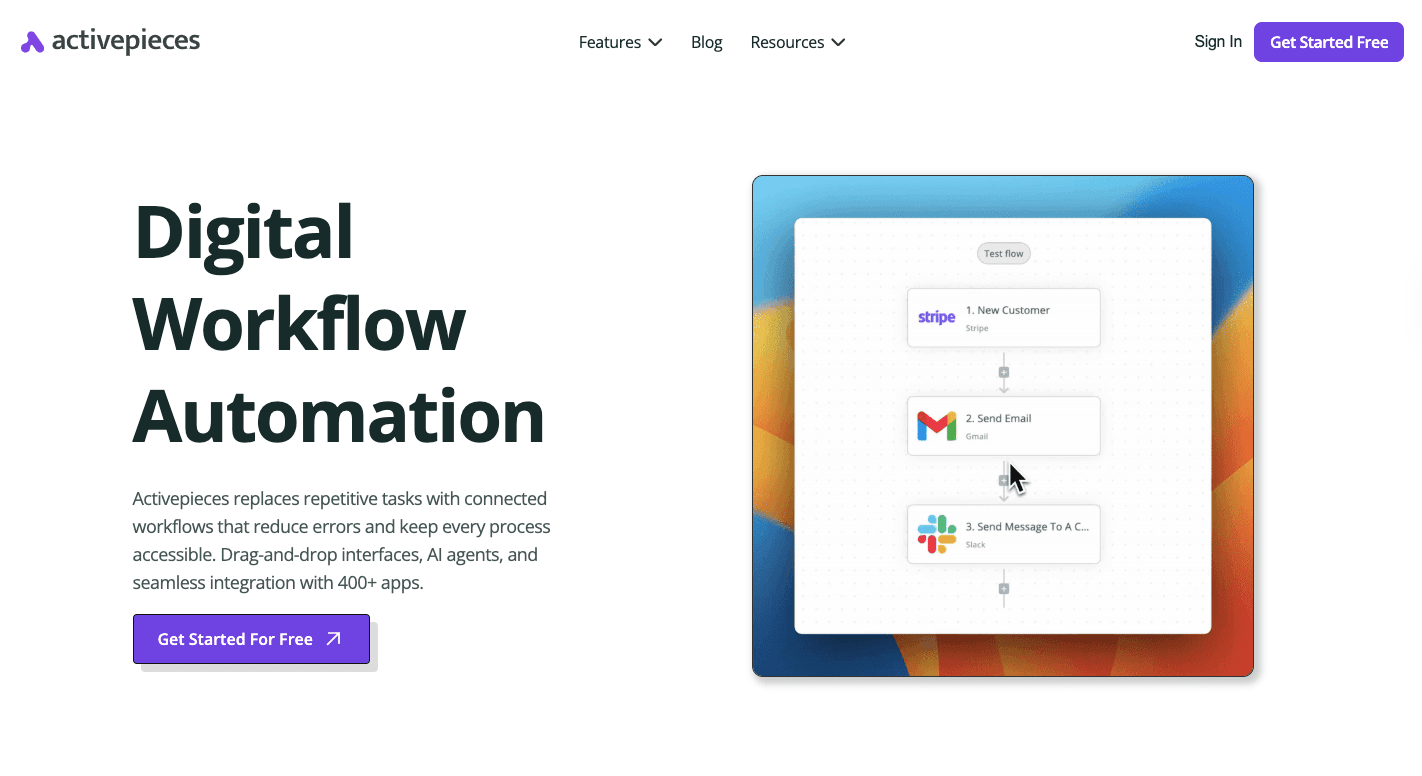
Activepieces takes what users like about Zapier and Pabbly and builds on it. It lets you automate with AI while keeping things easy to learn and simple to manage.
Anyone can use it, from non-tech users to advanced users, because it's designed to grow with you instead of holding you back.
The platform's user friendliness makes setup quick. You can connect apps, add steps, and design flows visually without touching code. Despite being simple, the system packs robust features that help automate everything from emails and SEO to customer support.
For larger companies, Activepieces includes enterprise-grade features like role-based access, secure self-hosting, and full branding control. You can also build your own integrations using TypeScript or add AI-powered agents that learn and make choices inside workflows.
In short, Activepieces is a full automation platform that adapts to how you work, no matter your size or skill level.
FAQs About Pabbly vs Zapier
Is Pabbly as good as Zapier?
Pabbly isn't exactly the same as Zapier. Zapier offers more integrations and broader support, while Pabbly is for those who want unlimited operations and simpler pricing.
If you're a small business or a team of non-technical users, Pabbly often covers your needs well, although Zapier may win for complex enterprise use.
How much is Pabbly compared to Zapier?
Pabbly starts with modest pricing and lets you run many tasks under one rate, which supports unlimited automation for some plans. Zapier's costs typically rise with usage and access to premium apps, leading to larger bills for teams running advanced workflows or requiring many connections.
Is there anything better than Zapier?
Yes. Depending on your business needs, you can find tools that offer better pricing or stronger specificity. For example, Activepieces delivers powerful features like custom agents, self-hosting, or deeper AI integrations, which may offer an edge over Zapier for certain teams.
Is Pabbly reliable when automating complex workflows?
Pabbly generally performs well, and it supports advanced workflows such as multi-step logic, routers, and scheduling. For heavy enterprise or ultra-high volume scenarios, you might face limits like polling intervals. But for most use cases, it's dependable and efficient.


